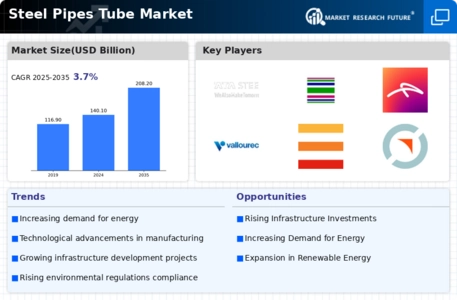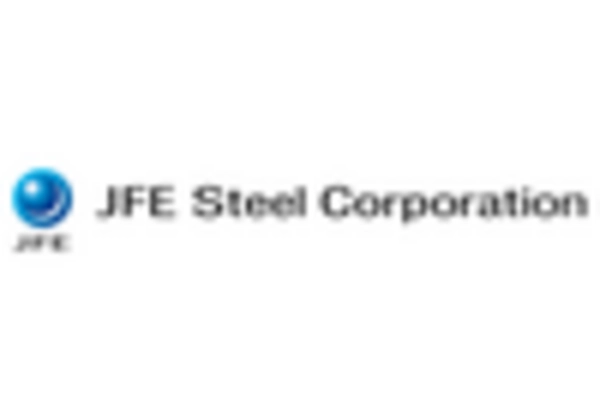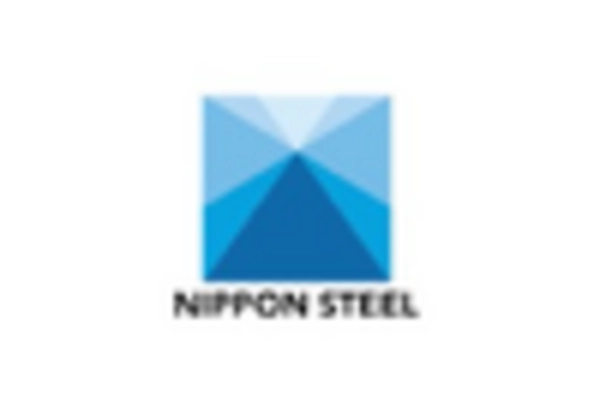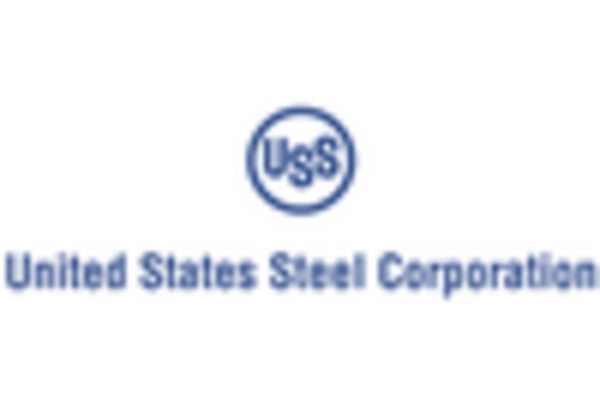Energy Sector Expansion
The expansion of the energy sector, particularly in oil and gas exploration and production, significantly influences the Steel Pipes Tube Market. The demand for seamless and welded steel pipes is expected to increase as energy companies invest in new projects and upgrade existing infrastructure. According to recent estimates, the oil and gas industry is projected to grow by 3% annually, which could lead to a heightened requirement for steel pipes used in drilling and transportation. Additionally, the shift towards renewable energy sources, such as wind and solar, may also require specialized steel tubes for support structures and piping systems. This dual demand from traditional and renewable energy sectors suggests a robust growth trajectory for the Steel Pipes Tube Market.
Technological Innovations
Technological innovations in manufacturing processes are reshaping the Steel Pipes Tube Market. Advancements such as automated production lines and improved welding techniques enhance the efficiency and quality of steel pipes. These innovations not only reduce production costs but also allow for the creation of specialized products that meet stringent industry standards. For example, the introduction of high-strength steel grades has enabled manufacturers to produce lighter yet stronger pipes, which are increasingly favored in various applications. The market is witnessing a shift towards smart manufacturing, where data analytics and IoT technologies are integrated into production processes. This trend is likely to enhance operational efficiency and product quality, thereby driving the Steel Pipes Tube Market forward.
Infrastructure Development
The ongoing infrastructure development across various regions appears to be a primary driver for the Steel Pipes Tube Market. Governments and private sectors are investing heavily in building roads, bridges, and urban facilities, which necessitates the use of steel pipes and tubes. For instance, the construction sector is projected to grow at a rate of approximately 4.5% annually, leading to increased demand for steel products. This trend is particularly evident in developing nations, where urbanization is accelerating. The Steel Pipes Tube Market is likely to benefit from these investments, as steel pipes are essential for water supply, sewage systems, and structural applications. As infrastructure projects expand, the need for durable and reliable steel pipes will continue to rise, potentially driving market growth in the coming years.
Rising Construction Activities
Rising construction activities across various sectors are driving demand in the Steel Pipes Tube Market. The residential, commercial, and industrial construction sectors are experiencing a resurgence, leading to an increased need for steel pipes and tubes. Recent data indicates that construction spending is projected to grow by approximately 5% annually, particularly in regions where urban development is accelerating. This growth is fueled by population increases and the need for modern infrastructure. Steel pipes are essential for plumbing, heating, and structural applications, making them a critical component in construction projects. As construction activities continue to expand, the Steel Pipes Tube Market is likely to see sustained demand, contributing to overall market growth.
Regulatory Compliance and Standards
Regulatory compliance and the establishment of stringent standards are pivotal factors influencing the Steel Pipes Tube Market. Governments and international bodies are implementing regulations to ensure safety and environmental sustainability in construction and manufacturing. Compliance with these regulations often necessitates the use of high-quality steel pipes that meet specific performance criteria. For instance, the introduction of new standards for corrosion resistance and durability is pushing manufacturers to innovate and improve their product offerings. This regulatory landscape may create opportunities for companies that can adapt quickly to changing requirements, potentially leading to increased market share in the Steel Pipes Tube Market. As industries strive to meet these standards, the demand for compliant steel pipes is expected to rise.


















Leave a Comment